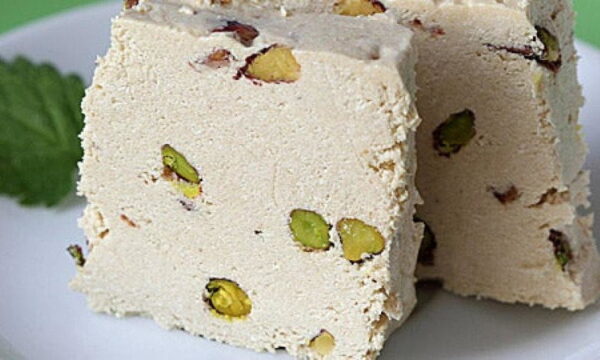After the destruction of Smyrna (modern-day Izmir, Turkey) in 1922, refugees who settled in the northern Greek region of Macedonia brought with them a deep-rooted tradition and expertise in halva-making. They soon began producing and trading halva, preserving their culinary heritage in their new homeland.
Halva is one of the most cherished sweets of the Lenten period. While many Greeks associate it with Ash Monday (Shrove Monday), it is enjoyed year-round for its rich nutritional value.
The basic ingredients of halva typically include a fat source (butter, olive oil, or sunflower oil), starch (flour, semolina, or tahini), and sweeteners (sugar, honey, petimezi, or glucose).
There are several types of halva: The Macedonian, the halva from Farsala, the semolina halva and each type with several variations
The Macedonian halva, also known as Bakali halva (or “grocery halva”), is made from tahini and traditionally sweetened with petimezi or honey. Commercial varieties often use glucose, fructose, carob honey, or a combination of these. With its chewy texture, it was once a staple in small grocery stores, earning its nickname “the grocer’s halva.” Today, it is commonly found in supermarkets.
Typically sold in rectangular packages, Macedonian halva comes in various flavors, including vanilla, honey, and combinations with almonds, hazelnuts, raisins, cocoa, half-vanilla and half-cocoa blends, or chocolate icing.




